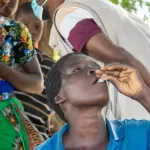Let’s flatten the infodemic curve

We are all being exposed to a huge amount of COVID-19 information on a daily basis, and not all of it is reliable. Here are some tips for telling the difference and stopping the spread of misinformation.
Due to COVID-19, most of us have a new word in our vocabulary: epidemiology. It is the branch of medical science that deals with the ways diseases are transmitted and can be controlled in a population. Now it is time to learn another new word: infodemiology.
As humans, we are a curious and innovative species. We want to understand the world around us and stay up to date on the challenges we face and how to overcome them. One of the ways we do this is by seeking out and sharing information – lots of it. Even scientists around the world are working hard to keep up with the thousands of studies that have come out since COVID-19 appeared.
But it is not only scientific studies. There are also official communications from governments and health agencies around the world. Then there are news articles and opinion pieces, and messages from vloggers, bloggers, podcasters and social media influencers. You may also see information shared by friends and family on social media or messaging apps.
All of this is called the infodemic: a flood of information on the COVID-19 pandemic. Infodemiology is the study of that information and how to manage it.










